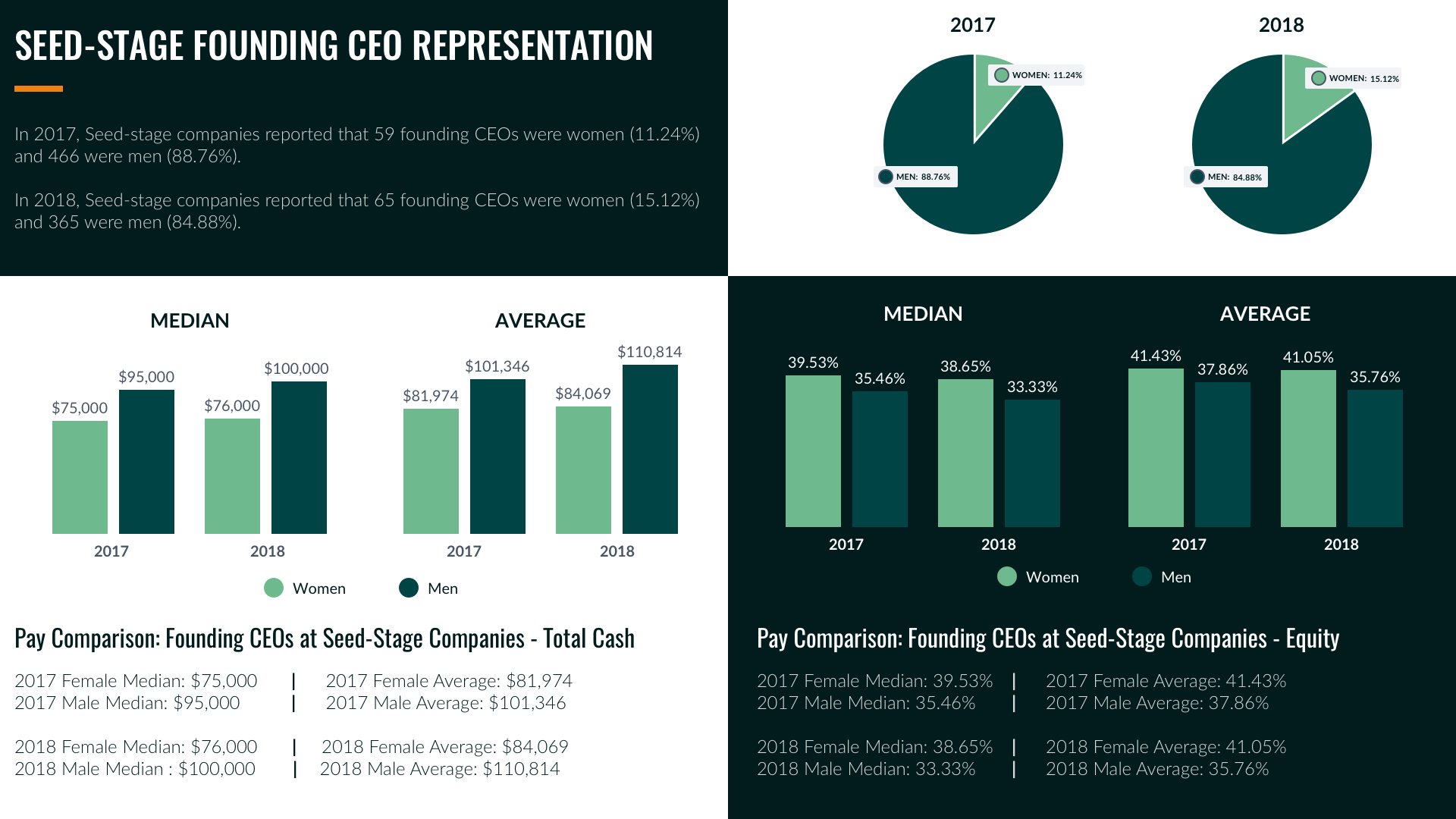Compensation is the most intimate way a company can interact with its employees. For far too long, compensation managers and committees have operated behind closed doors, keeping pay guidelines shrouded in mystery. Developers with equal experience, performing at the same level, and huddled around the same table while trying to perfect autonomous ocean to table omakase experiences could receive drastically different pay packages. Those times are over.
Unemployment sits at historic lows, investors are pouring in money through massive rounds, and companies are stepping on, over, and around each other to attract the best talent. Silicon Valley sits at the epicenter of competitive labor markets, but we’ve heard the same story over and over: Big Company X is coming to town, and we can’t pay like them.
Heads up Seattle, Austin, Boulder, Boston, New York, Chicago, and most recently, Virginia! Recruiters must be aggressive, and it’s only a matter of time before an all-star employee mentions a 25% pay bump available at Company X. A team member hears the news and they’re suddenly browsing job boards as well. The dreaded churn switch is pushed a notch higher.
Today’s workforce is more connected than ever, having grown with technology since the days of Tetris, Shufflepuck, and Oregon Trail. What was once taboo to share with anyone beyond your significant other, is now being posted freely for the masses.
We won’t even start on the impacts of social media! Reviews and ratings began popping up for schools, restaurants, and workplaces. Glassdoor, Salary, and others provide deep insights to pay, work-life balance, and executive leadership approval ratings.
Then, things went a step further by detailing gender alongside compensation, most notably in the employee-led survey at Google in 2017. It was the shot heard round the world. How could a well-known organization which prides itself on diversity, and that some think is the entire internet, find itself with gender pay disparity?
Over the past year, I’ve visited and revisited the gender pay gap with various talent partners at prominent venture firms. Kelly Kinnard of Battery Ventures and Bethany Crystal of USV authored pieces on the topic. One theme was common when discussing pay disparity – What if we had real data? What if we had corporate-sourced data that wasn’t subject to disgruntled employees or selective reporting? Well, we do.
Advanced-HR hosts the world’s largest compensation database specific to venture-backed companies. For the first time, we took a deep dive into compensation and gender at privately held, VC-backed companies and we’re sharing the findings.
Thousands of companies and 10,000+ corporate-sourced employee data points. Nothing inferred. Though we analyzed the entire data set, this article only considers US Company data.
We do not display gender-based compensation data but VC-backed companies can access our database of 2800+ participants for free by completing a quick survey. Venture firms and all others interested in our data, contact us here.
About the data
Each year, we have the privilege of running the industry standard VC Executive Compensation Survey alongside 160+ top venture firms. All sponsoring firms and their participating portfolio companies receive the final report of detailed, aggregate, and anonymous compensation data. Before we review compensation, let’s visit gender representation at VC-backed companies.
The following slide is part of a more comprehensive 11-slide deck viewable at the end of this article, highlighting takeaways and key findings from our data.

Data is great. Now what?
It’s the hot topic and hiring managers are on red alert. Pay fairly or risk a PR nightmare. Here are some steps you may want to consider.
1. Founders need to hire. Owning the hiring process allows founders to gain valuable experience and exposure. By creating job descriptions, founders can be thoughtful and sensitive to the fact that connotations and tone can unintentionally isolate a specific segment of eligible talent.
Learn what it takes to identify top talent while omitting superficial biases like gender, one’s command of the English language, personality quirks, and designer shoes or jackets. Gaining this experience during the first 25 hires ensures that you can lead your hiring team as your company scales.
Whether you’re an early or late stage company, hiring well boils down to two questions: Who is competent? Who can I trust to get the job done?
“We recognize that strong management teams and compensation philosophies are a critical cornerstone to building diverse and inclusive companies. As a result, GGV built a leadership platform, Founders + Leaders, to empower anyone from manager to C-suite executive and help them develop management competencies and incorporate equitable pay practices from day one.”
– Jennifer Holmstrom, Head of Talent at GGV Capital
2. Hold up the mirror. This is more difficult than it seems. Take a look at your organization and compare gender distributions within departments against industry norms. Start by comparing the number of male and female applicants you receive for a specific job.
Does this ratio roughly represent the composition of your team? If not, ask the right questions. Do we have an inclusive and open hiring process? Are we considering a candidate’s skill set, past experience, and qualifications, or are we enamored by their external appearance and the potential of gaining a new best friend?
It’s unreasonable to expect perfect gender representation against the available talent pool, but a drastic gap can identify bias in your hiring process. Keep in mind that larger companies can afford to pay for diversity, shrinking the realistic talent pool for everyone else. While unconscious bias may lead to a team of people that look, speak, and think the same, hiring should be about competency and trust in the candidate along with a realization that diverse teams create optimal outcomes.

Image via Getty Images / sorbetto
3. Identify pay gaps. This is the hard part and I’ve outlined a simplified approach below. Companies conducting a pay gap analysis seek to answer a single question: Do we pay two (or more) groups of employees equally, after adjusting for varying levels of education, seniority, and performance?
Small companies will be particularly challenged due to the lack of employee data points, but the findings can still identify potential hiring or pay bias early on in the company’s life cycle. Being well-informed certainly can’t hurt.
- Gather structured data. To start the pay analysis, you’ll need structured and verified employee data. Confirm employee data between your HRIS and/or payroll provider.
- Create groupings. Employees are often grouped by department or functional discipline. You’ll want to create groupings that are broad enough to return meaningful trends. Less than 250 employees? Keep it simple. Separate employees into 3 key groupings: Technical, Business/Non-technical, and Sales. If you have enough headcount to focus on “Software Engineers”, add another layer to the analysis.
- Level without regard for title. Many early-stage companies struggle with job title inflation. Place employees in a consistent hierarchical order which considers years of relevant experience and expertise. Our users have access to tried and true leveling rubrics.
- Note skills and knowledge sets. What makes this employee unique? Hired from Competitor Y, domain expertise, tenure, hard to find skill set, top performer, or mission-critical employee to name a few.
- Run the analysis. Compare average pay across a level within a defined function or department. There will be pay discrepancies throughout your analysis. Is one group consistently paid less than another? Do men consistently receive more equity than women working within the same grouping? Are there discrepancies that cannot be explained by an individual possessing a unique skill or knowledge base? A few pay discrepancies should be considered normal. Watch out for the macro trends.
“The gender pay gap is a critical topic that companies need to address head-on as early as possible in their life cycle. It’s dangerous when companies wait too long or grow too big to then try to fix the problem. If you start early and are conscious about asking for help when needed, you can ensure your pay system set up properly from the start.
For those of us working in talent at venture capital firms, we don’t expect early-stage startups to have all the answers or tools right away. But we’re happy to provide advice and put founders in touch with experts and resources to help with things like unconscious-bias training; referrals to compensation consultants; tools like Textio that can help you write job descriptions to ensure they don’t turn off certain applicants; and hiring in-house, HR leaders who can help spearhead progressive initiatives. Because of the size of our portfolio, we have insights into the best practices to tackle this important topic and can help our portfolio companies compete for the very best talent in this hot market.”
– Kelly Kinnard, Vice President of Talent at Battery Ventures

Image via Getty Images / wenmei Zhou
4. Don’t overreact. With so much discussion on the gender pay gap, it can be easy for talent teams to get overly fixated on equal pay. An acquaintance reached out to me after the Google article in early 2018.
With “gender pay gap” trending and setting the tech world ablaze, their team paid well above market for a specific skill set. The team was so engrossed by paying equitably that they failed to accurately assess the individual.
Admittedly, they were a younger team but it underscores the importance of outlining a hiring process which provides the framework for unbiased and independent candidate analysis. Watch your budget and focus on the talent. Remember: Pay discrepancies are normal, systemic pay gaps are not.
After beginning this article, Google found itself on the other side of the gender pay gap equation.
5. Establish pay ranges. If you don’t have formal pay ranges, establish them NOW. Yes, I know you’re focused on building product, product, product, but employees are your biggest expense by a long shot. It’s worth the time. Create pay ranges, and update them at least annually.
- How? You do not need to be a compensation professional to create strategic pay ranges. The Option Driver platform scales with company growth and is leveraged by teams of one to full-scale compensation teams. It’s quick, intuitive, and leverages the strongest market data the industry has to offer. Automated leveling, benchmarks, and a host of analytics and algorithms guide you each step of the way.
- We Already Have Ranges. Are you sure? Over the past eight years, it’s terrifying to recount the number of companies who just ‘wing it’ when it comes to compensation – The largest being close to 200 employees. Do not confuse strategic pay ranges with market data.
- Market Data: Aggregated pay data from any variety of sources. Market data fluctuates based on the source, participants, and update frequency. It represents what’s happening outside your door but does not account for your company’s value proposition or what the company can afford. Public company data is widely available and represents the competitive cash market at its highest mark. Pre-IPO data is difficult to come by, and we partner with 165+ top venture firms to produce the world’s largest compensation database specific to venture-backed companies. Best of all, it’s free to participants.
- Strategic Ranges: Strategic ranges represent a company’s position against the broader market. For private companies, this means knowing where you’ll compete for talent, but most importantly, identifying the optimal mix of cash and equity that produces a compelling value proposition for your employees.
- “We target the 50th percentile of equity data” is a dangerous statement. It suggests that the company is blindly following what other companies are doing without regard for its own value proposition. All else equal, does a company with a first-time founder have the same likelihood of success as a founder who’s had 3 successful exits? Is the trajectory of a 5-year old company with 5M ARR the same as a 2-year old company with 5M ARR? The value proposition of your company DOES NOT change on a daily basis, and neither should your strategic ranges.
- Chasing market data leads to ad hoc compensation practices, and nearly guarantees pay gaps whether gender or otherwise. Compensation market data is like an exchange rate – It’s always moving. Would you offer $150,000 to an engineering candidate on Monday and $150,437 to a second candidate later that week due to a weakened dollar? No. Take the time to craft strategic pay ranges. Be confident in the value proposition your company’s equity provides to employees and make sure your hiring team can articulate this to candidates. If they can’t, you need to step in fast. “Our offer is $150k with 57,000 stock options” is not acceptable.
We create strategic ranges. Our users avoid pay gaps.
“Truth and trust in data is the lifeblood of our business so it made total sense to partner with Advanced-HR to make sure we make sound compensation decisions and eliminate any gender bias. They help us create fact-based compensation plans that enable our company to literally live and breath our core values of creating truly a level playing field for everyone as we recruit, retain, and inspire our employees. For us, it’s not about closing the gender pay gap – it’s really about eliminating it.”
– Jacob Orrin, Repeat Founder, Co-Founder at Sigma, Inc.

Image via Getty Images / vasabii
6. Cogito, ergo sum. Let’s take a step back and acknowledge one thing: We all have biases. Period. There are companies with bad actors who trample their peers, but I believe most pay gaps occur unintentionally through bias. A recruiter that easily socializes with ENTJ’s could find themselves with a homogeneous candidate pool.
It’s important for the hiring team to recognize existing biases as they represent the tip of the spear against pay gaps. Kelly Kinnard of Battery Ventures has some great insights regarding the recruiting process in a Forbes post. The bottom line: Make sure your employer brand, recruiting process, and company culture promote inclusivity.
One of the biggest challenges with bias is that we often fail to realize its presence between our ears until it inflicts pain or induces negative sentiments from someone else – And this can be years down the line. In the corporate world, it’s the exact same thing.
A small, unintentional bias can carve its way into becoming a systemic problem. Sit down with your team, strive for inclusivity, build strategic and systematic pay ranges, and be humble enough to admit “I am”.
Take a look at the full slideshow outlining our data, findings and key takeaways below:
[gallery type="slideshow" size="full" ids="1849014,1849015,1849016,1849017,1849018,1849019,1849020,1849013,1849021,1849022,1849023"]
